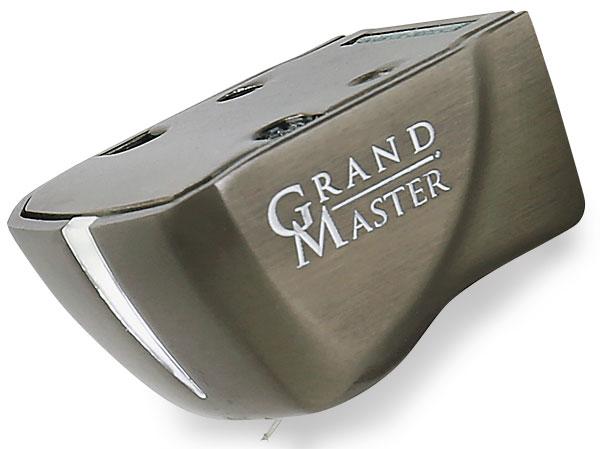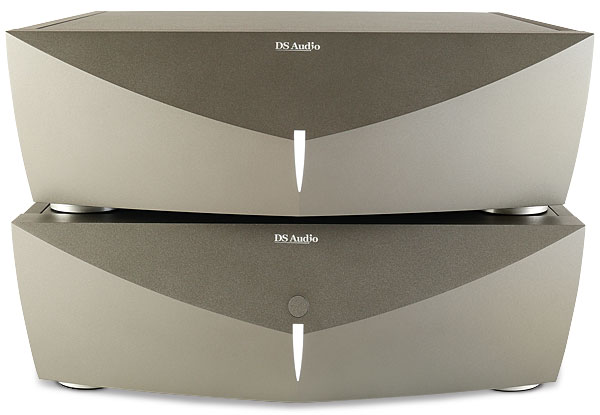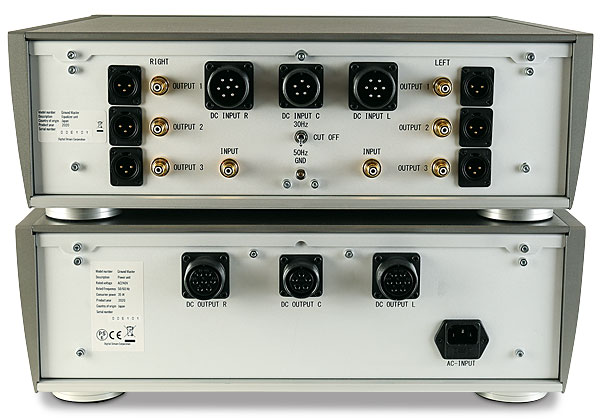DS Audio Grand Master Cartridge

 Following its groundbreaking Master 1 optical cartridge, DS Audio introduces the Grand Master, and a two-box energiser/equaliser, to up the ante even further
Following its groundbreaking Master 1 optical cartridge, DS Audio introduces the Grand Master, and a two-box energiser/equaliser, to up the ante even further
In every field, not just 'hypercars' and luxury wristwatches, there's an extreme, cost-no-object pinnacle. From chefs' knives to sunglasses to fishing reels, there are items which push engineering and price limits, a phenomenon we are used to in high-end audio. Thus, with shaking hands (not a desirable state with this item), I installed the DS Audio Grand Master cartridge, at £11,995 surely the most expensive pick-up I have ever reviewed, if not the most expensive on the planet.
That's not all: DS Audio cartridges, with their 'optical' engine, require their own dedicated energisers and specific equalisation – you certainly don't feed these into a conventional phono stage. To accompany the Grand Master, there is a brand-new two-box unit selling for a heart-stopping £38,000, though PM and I were just as shocked by the weight – a full 25.1kg for the equaliser and 29.8kg for the power supply, each occupying a space of 452x152x486mm (whd). Looking at the Grand Master's energiser/power supply, you'd think you were seeing a pair of over-engineered monoblock power amps. The finish, of course, is superlative.

Photo Boost
Before we get to the specifics, please note two important aspects of this new flagship product. The first is that every DS Audio cartridge can work into any of the company's energisers. The second is that there is a trade-in programme so one can upgrade from, say, a Master 1 [HFN Dec '17] to the Grand Master. That said, I may be the only person alive, outside of DS Audio, silly enough to try the entry-level DS-E1 cartridge [HFN May '19] into the Grand Master energiser, and the Grand Master cartridge into the DS-E1 energiser. But the findings were fascinating, and we'll get to those shortly.
Back to the Grand Master itself. DS Audio calls it 'the third generation of optical cartridges', reaching this plateau in just seven years. Older readers will recall optical cartridges from a half-century ago, eg, Toshiba's effort, which were limited by the technology of the day, but DS Audio has clearly benefited from all manner of LED-related developments.
To advance beyond the still-amazing Master 1, DS Audio graced the Grand Master with independent LEDs and photo-detectors for the left and right channels. This provides a claimed 75% boost to the cartridge's output voltage, from 40mV to 70mV, also benefiting the S/N and stereo separation. Indeed, most impressive of the sonic benefits here, once past the astounding bass, is the lack of crosstalk.
DS Audio also fitted a smaller 'shading' plate made from 99.9%-pure beryllium, halving its weight from 1.56mg to 0.74mg. The company points out that 'This is less than 1/10th of the mass of a typical core-and-coil system found in a traditional MC cartridge'.
Though not the first to use this as the cantilever material, DS Audio has opted for diamond, chosen for rigidity, fitted with a micro-ridge stylus. The original, and still with the shortest diamond cantilever is Dynavector's Karat 17D3 [HFN Jul '12], though this remains a 'conventional' MC... Meanwhile, DS Audio's new cartridge body is fashioned from 'Ultra Duralumin' to maximise rigidity, and the internal wiring is 1.6x thicker than that used in previous models, to reduce its impedance. Unfortunately, the one change I would love to have seen has not been addressed: the body height remains abnormally low, and it proves difficult to fit this to tonearms with tapered barrels that widen at the pivot, potentially falling foul an LP's edges if lowered to their minimum height. In such cases a 2-3mm spacer fitted between the top of the cartridge and underside of the headshell will effect a solution, though this comes at the expense of added mass.

The Equaliser
Now let's take a look at the bulk of the cost in this £50k package: the two-chassis equaliser and power supply unit. Connection is slightly more complex than simply feeding the tonearm leads into the back. For openers, there are three heavy umbilical cables, two sets generously supplied in both 500mm and 900mm lengths to aid in siting the two chassis. The two 7-pin cables connect power to the L/R equaliser channels, while the central, 5-pin cable feeds the LED power supply unit.
There's a choice of three single-ended RCA and three balanced XLR outputs, differing by their low frequency cut-off points – a flexibility it shares with the Master 1 energiser. The appropriate filter is selected according to one's speakers and system needs. As I auditioned this through both Falcon Acoustics' LS3/5As [HFN Dec '18] and Wilson Sasha DAW loudspeakers [HFN Mar '19] I had ample opportunity to try the various options available and can confirm they will markedly affect behaviour in the bottom octaves.

Custom Made
Along with moving to two boxes for the PSU and equaliser, DS Audio has now utilised custom-made film capacitors and non-inductive resistors. Inside the PSU enclosure can be found three transformers, one for each of the left and right equalisers and the third for the LED supply. Overkill perhaps, but the Grand Master design also includes a claimed 2.34 farads of electrolytic capacitance within the equaliser and 2.97 farads within the power supply. Once more, the main gains over the smaller equalisers were audible down below, so this package really does cater for bass obsessives.
























































